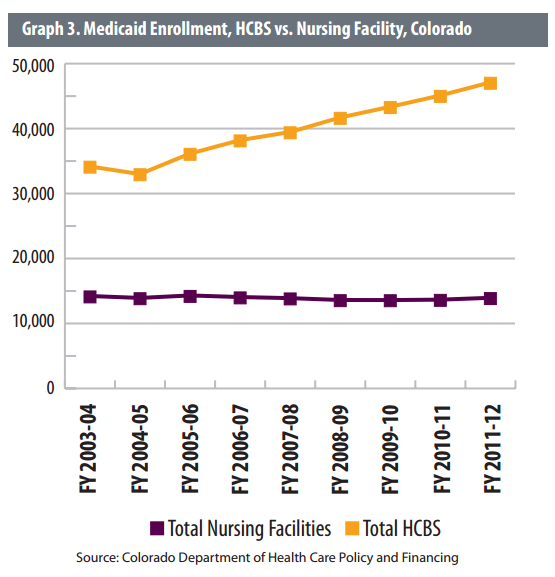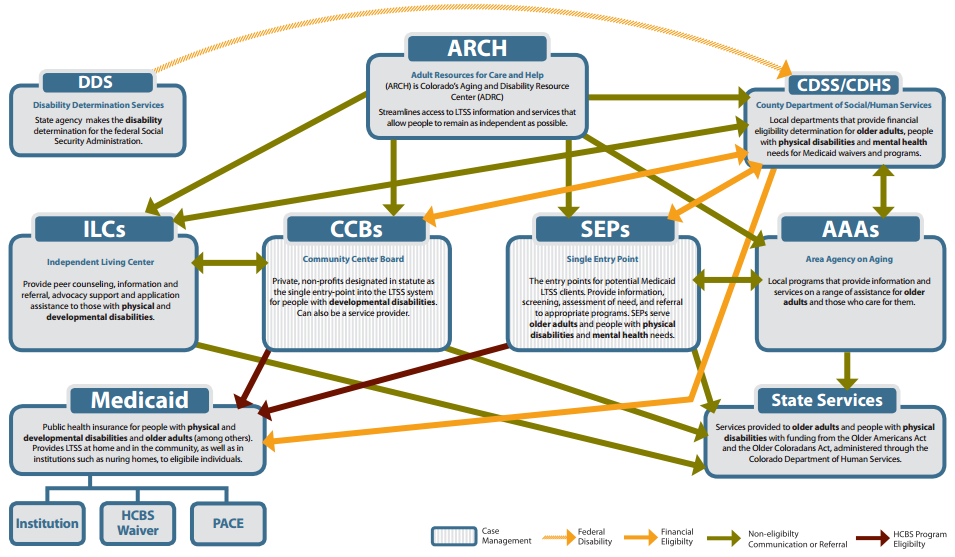Putting Together the Long-Term Services and Supports Puzzle
The Colorado Health Institute released new research looking at Colorado’s long-term services and supports (LTSS) system during a full-day learning lab we hosted last week.
We presented two papers. I researched and wrote The First Step: Fixing Colorado’s System of Long-Term Services and Supports, which pulls together the components of the system’s entry points and visually shows its complexity. The other paper, a case study taking a deeper look into the system at a local level by focusing on Larimer County, was written by Elizabeth Bloemen, an MPH student at Columbia University’s Mailman School of Public Health, who interned at CHI over the summer.
Both papers delve into the reasons this system is often so frustrating and confusing to navigate and document the efforts underway to address those systemic problems.
We found that people often do not know where to go first when trying to access LTSS, and face many other barriers from confusing paperwork to dealing with multiple agencies. Also, several data systems are involved in tracking people and many do not “talk” to each other.
We also found, however, many people working in LTSS who are passionate and dedicated not only to their clients but to finding solutions.
There are many reasons that this is a topic of urgent interest in Colorado’s health policy community.
First, a definition: LTSS are used by people with disabilities, both seniors and younger people. Perhaps the most well-known form of LTSS is nursing facility care. But more people are receiving LTSS in their homes and communities through personal home care and alternative care facilities, as shown in this graphic.

Colorado Medicaid provided LTSS services to about 64,000 people in fiscal year 2011-12, and that number is expected to grow dramatically as Baby Boomers age.
About 70 percent of seniors over the age of 65 will need LTSS at some point in their lives. Colorado’s 65-and older population is anticipated more than triple to 1.4 million in 2040 from about 419,000 in 2000 – a growth rate that will outpace that of the nation.
This is the LTSS Puzzle at a broad level. It shows the main entry points for people trying to access LTSS and the steps they may have to go through to get the services they need.

With more people entering the LTSS system, it is important for Colorado to start creating more efficiencies, not only to conserve limited resources but to provide a system that better meets the needs of a greater number of Colorado’s most vulnerable residents.
Participants at the CHI learning lab included representatives from state government, the federal government, advocacy groups for seniors, advocacy groups for people with disabilities, state lawmakers, health policy experts and consultants, and individuals, family members and caregivers.
The group learned about the current picture of LTSS in Colorado, heard from experts on trends at the national level, and listened to how Maryland redesigned its entry point system.
A robust discussion about possible solutions revealed that most of the attendees agree on several crucial points:
- There is value in the current system, and it provides a foundation for Colorado to build on.
- Colorado has an opportunity to be innovative and bring non-traditional partners, such as hospitals, into the LTSS system.
- A connected data system that tracks people throughout the entire process is a need to prioritize. Currently, the system runs on a number of different computer systems, some of which don’t talk with each other.
As Colorado and the rest of the country grapples with how to provide the right services, in the right place, at the right time, CHI is committed to continuing the discussion and providing ongoing research.
